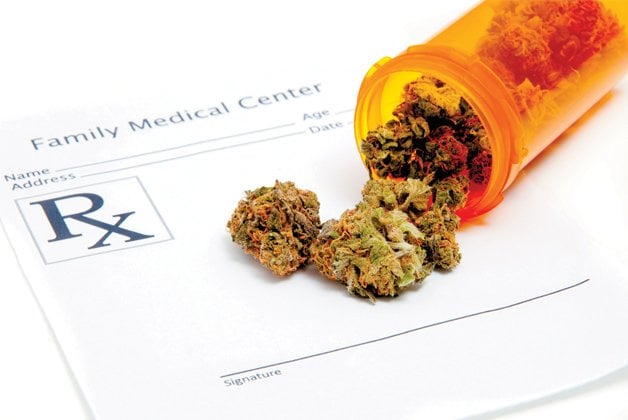
I’ve been thinking that I should start smoking pot. Truthfully, I hate the high, so it’s been nearly 20 years since my last inhale. But rumours are, I’m missing out on a world of health benefits.
While there’s much anecdotal evidence for these, the peer-reviewed research hasn’t always followed – thanks in large part to pot’s illegal status. Sleep studies, for example, have shown mixed results. Marijuana may help you fall asleep, shows a 2008 study at Germany’s Freiburg University Medical Center, but it reduces REM sleep. Yet a 2010 McGill pain study showed that puffing does give you better repose.
If weed offers all kinds of good for body and mind, should we all get in on the toking action?
What the experts say
“The health benefits are vast, varied and significant. The cannabinoids work on a deep level in the brain and the body. The difference between indica and sativa is largely folklore. The difference has to do with compounds called terpenes, which give the plant its smell. The terpene profile will vary from strain to strain. Some make you sleepy, some are more energizing. The two prominent cannabinoids are THC (tetrahydrocannabinol) and CBD (cannabidiol). THC, which is psychoactive, has many benefits. It inhibits an enzyme indicated in the buildup of plaque in the brain, the hallmark of Alzheimer’s. This is proven. It’s a strong painkiller. CBD is not psychoactive and can lessen the psycho-activity of THC. CBD shrinks tumours, regulates glucose metabolism and is powerful in terms of neuropathic pain.”
MARTIN LEE, author, Smoke Signals, director, Project CDB, Santa Rosa, California
“People who don’t want to smoke pot can put it on their skin or use suppositories, eye drops or eardrops. There is a British-produced sublingual spray. At medical dispensaries, there are sweet products you have to have a lipid, a fat, with cannabis. Some say if you smoke heavily you can expect pre-bronchial wheeze and early-onset emphysema, but you don’t have the profound respiratory and cancer problems associated with tobacco. We looked at the best way to deliver cannabinoids: joints, pipes, water bongs, vaporizers. Our study indicated that a vapour device delivers 99 per cent of what the consumer or patient wants and only about 1 per cent of combusted material you don’t want. Anecdotally, patients who suffer chronic pain say they get better relief from vaporizing than from smoking, but those studies are still pending.”
ALLEN ST. PIERRE, executive director, NORML, Washington, DC
“It’s the mellow, centring element that’s most sought after by spiritual users of cannabis. [The effect is] being happy without being manic, and sad without being depressed. The Sufi sage Haydar was said to have written around 1300 A.D., “God has granted you the privilege of knowing the secret of these leaves thus when you eat of it, your dense worries disappear and your exhaled minds become polished.” Rastas, Hindi sadhus and Muslim fakirs [Sufis] might suggest it aids in overcoming the ego and revealing the collective soul beneath. Cannabis has played a long-time role in yogic practice. It also aids in the creative process, which is why so many famed writers, musicians and poets have been drawn to it. Cannabis increases brain cell growth and potentially increases longevity.”
CHRIS BENNETT, cannabis historian, host of Pot TV, Vancouver
“Marijuana provides the phyto-cannabinoids that reinforce or moderate the endo-cannabinoid system already in the human body. This system affects the gastrointestinal, neurological and skeletomuscular system. Marijuana doesn’t inhibit the respiratory or cardiovascular systems, so you can’t have a fatal overdose. It helps your body function more in keeping with your internal harmony. The science has been perverted by the U.S. government’s blocking of domestic research.”
CHRIS CONRAD, curator of the Oaksterdam Cannabis Museum, El Sobrante, California
“My research compares heavy [pot] smokers who begin prior to the age of 16, an age of neuro-vulnerability, to those starting after the age of 16. We use brain imaging, neuropsychological measures, clinical and diagnostic assessments. We find that individuals who smoke prior to age 16 have a different pattern of brain activation and response to tasks requiring cognitive control, which is primarily controlled by the frontal cortex. It’s not that their performance is bad it’s just that they activate different circuits in the brain to get the job done. And they perform more poorly on some neuro-cognitive measures. That doesn’t mean smoking doesn’t have benefits. Patients with bipolar disorder who smoked marijuana had a significant mood improvement compared to those who didn’t. Canada has a product called Sativex for chronic pain and MS. It’s THC and CBD in a one-to-one ratio.”
STACI GRUBER, director, cognitive and clinical neuroimaging core, McLean Hospital Brain Imaging Center, Belmont, Massachusetts
Got a question?
Send your Althealth queries to althealth@nowtoronto.com












